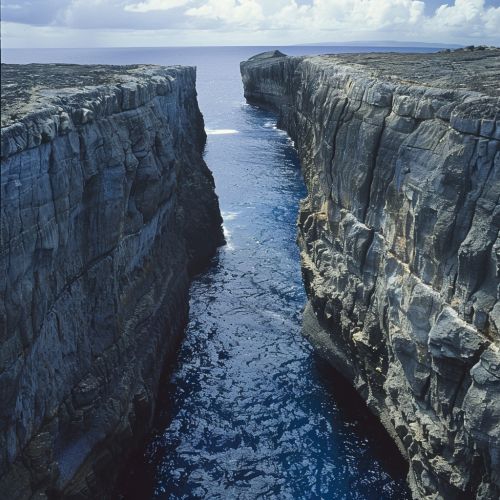Trench (geology)
Overview
A trench in geology is a long, narrow, and deep depression in the ocean floor, typically formed at the boundary between two tectonic plates. Trenches are the deepest parts of the ocean floor and are created by subduction, a geologic process in which one plate is forced under another.
Formation
Trenches form at convergent boundaries, where one tectonic plate is forced under another in a process known as subduction. The subducting plate, which is usually an oceanic plate, moves into the mantle under the overriding plate, creating a deep depression in the ocean floor.
Characteristics
Trenches are characterized by their great depth and narrow width. They can reach depths of over 36,000 feet (11,000 meters) and widths of 43 to 69 miles (70 to 110 kilometers). The deepest part of the trench is known as the challenger deep, named after the HMS Challenger, which conducted the first scientific survey of the trench.
Examples
Some of the most well-known trenches include the Mariana Trench in the western Pacific Ocean, the Tonga Trench in the South Pacific, and the Kuril-Kamchatka Trench in the northwest Pacific.

Impact on Oceanography
Trenches play a significant role in oceanography. They influence ocean currents, temperature, and salinity. They also serve as sites for the deposition of sediment and organic matter, which can provide valuable information about the Earth's history.
Impact on Seismic Activity
Trenches are often associated with seismic activity. The movement of tectonic plates can cause earthquakes, and the subduction zones at trenches are some of the most seismically active areas on Earth. The 2011 Tohoku earthquake in Japan, one of the most powerful earthquakes ever recorded, occurred in a subduction zone.
Impact on Biodiversity
Despite the extreme conditions, trenches are home to a variety of life forms. These organisms have adapted to survive in the high-pressure, low-temperature, and low-oxygen environment. Studies of these organisms can provide insights into the limits of life on Earth and potentially on other planets.
